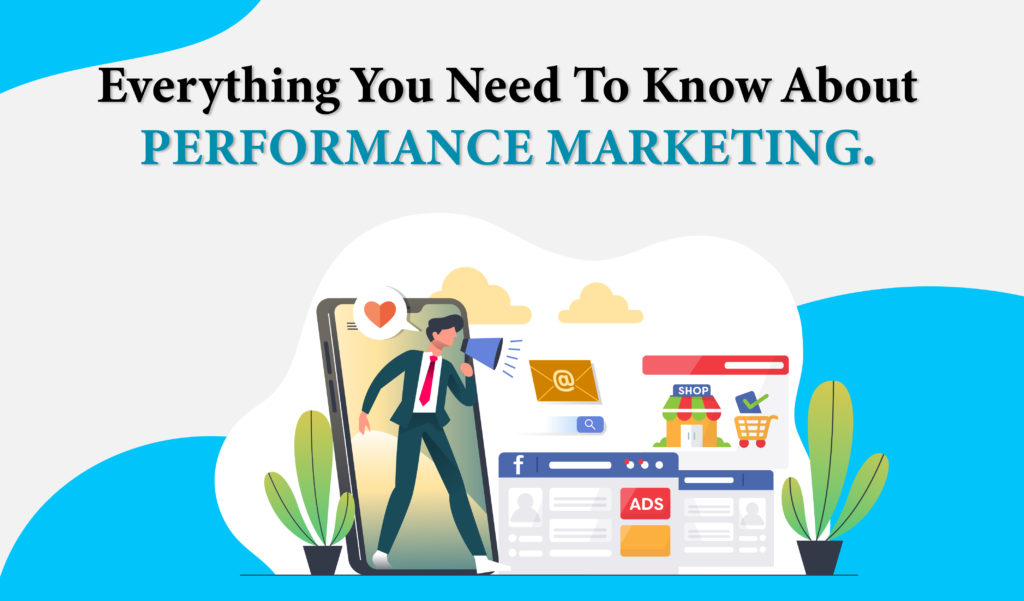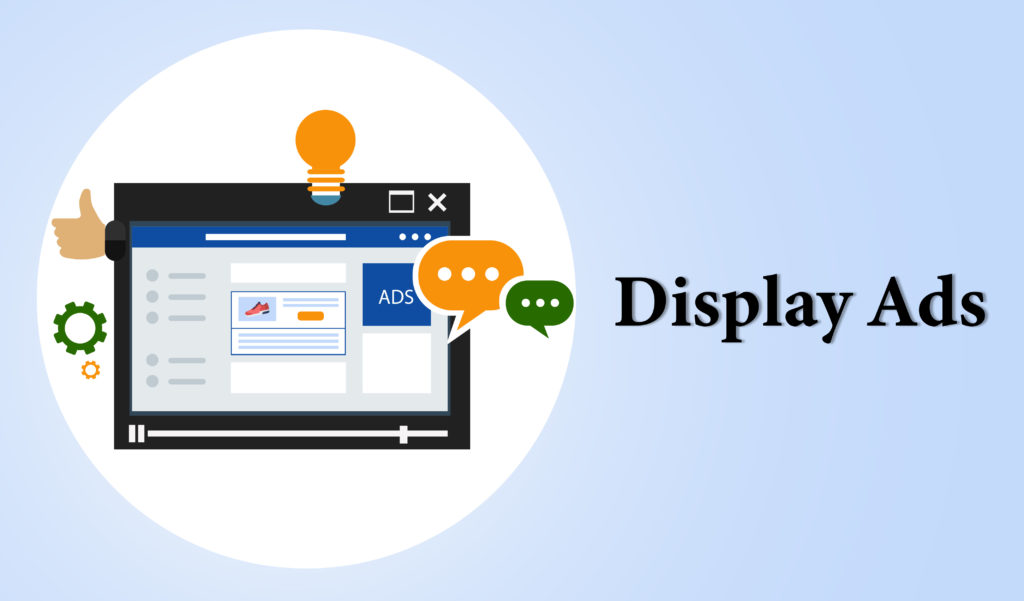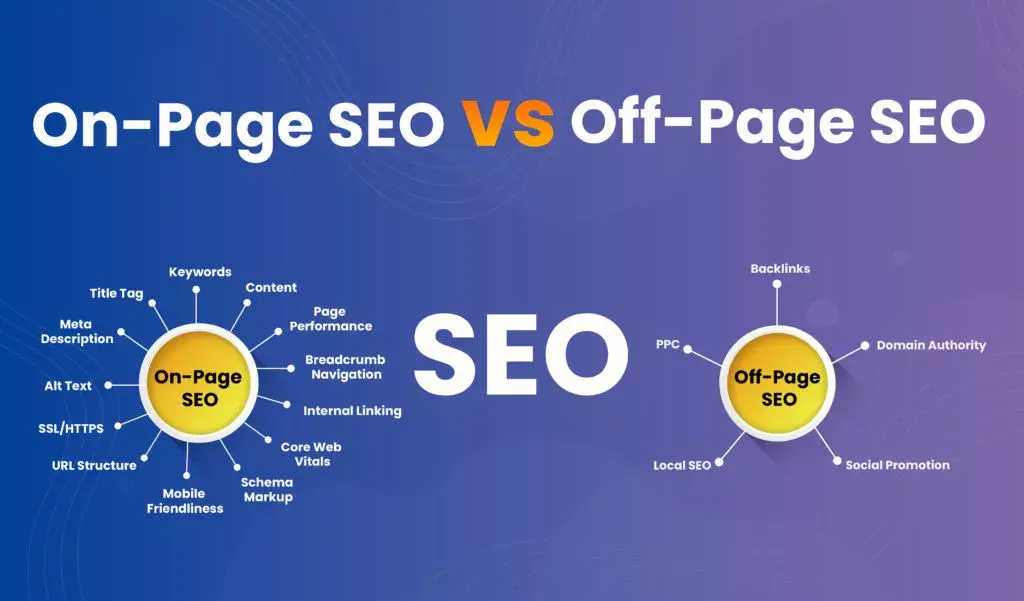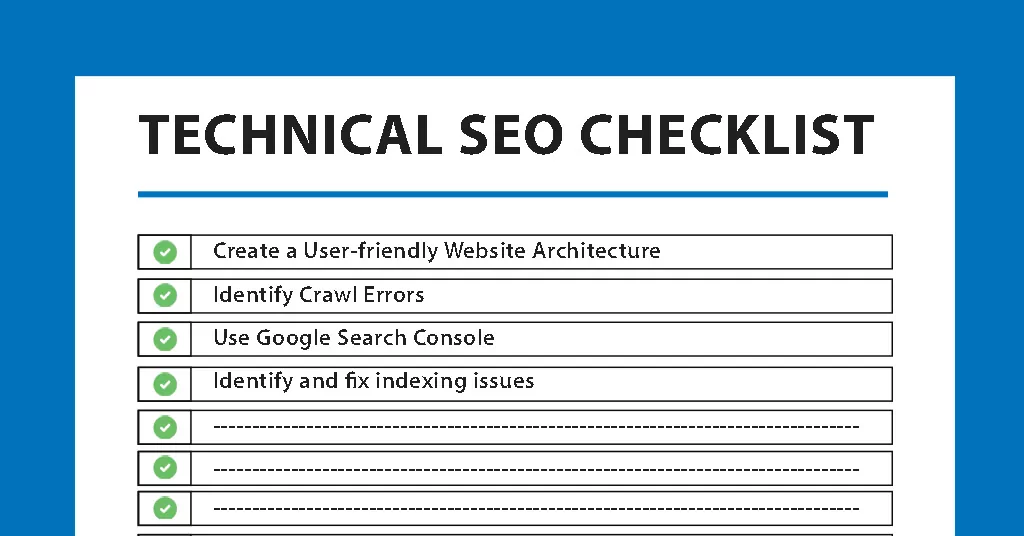Everything You Need to Know About Performance Marketing
Table of contents

There are many ways to grow your business with digital marketing and performance marketing is one of them. It has evolved into a catch-all term for various high-impact online advertising methods. Hence, identifying an efficient marketing strategy is critical to any company’s growth. It assists in reaching out to and connecting with the target audience, establishing brand recognition, fostering brand affinity, and influencing consumer behavior.
It’s similar to a road map that helps business owners achieve their objectives and expand their operations just as social media optimization. In addition to internet marketing, SEO paid advertising, and Performance Marketing is rising to the occasion and altering the game due to their impact on how organizations advertise and sell their products and services.
While this may appear to be a novel concept, performance marketing has been present since the mid-1990s, when Pay-Per-Click campaigns first became popular. Performance marketing, also known as performance-based marketing, has grown in popularity due to new technology that allows businesses to collect more information on their campaign performance.
With this data, they can better ascribe value to the activities with the highest success and adjust their strategy accordingly. The fundamental premise of performance marketing is straightforward. You pay for marketing results, such as ad clicks, lead generation, conversions, and so on.
We’ve put up this helpful article that explains what performance marketing is, why you’d use it, the most common sorts of internet advertising, and how to get the most of it.
What is meant by the term “Performance-Marketing”?
Performance marketing is a type of online marketing and advertising in which advertisers are only charged when a particular action is taken. These actions can be a generated lead, a sale, or a click.
Professionals working for agencies, media firms, or publishers, rely significantly on paid marketing channels such as:
- Native advertising
- Affiliate marketing
- Search engine marketing
- Sponsored advertising
- Social media advertising
How do they work?
Like all media (typically owned by media buyers), each channel has a distinct audience and offers several advertising channels to reach them. A combination of them is used based on the following elements:
- Target audience and segmentation—Audience categories are available on each ad platform, and you can utilize them to target your audience.
- Bid—Programmatic capabilities consider the money you’ve agreed to pay to have your ad aired in a particular location and time to a specific target demographic in today’s advertising industry.
- Quality and relevance—Trust is the essential issue people have when advertising. As a result, the effectiveness of the ads is considered. If your ad doesn’t work—that is, if it obtains low-quality ratings—the network will limit its visibility.
- Conversion—Performance marketing’s economics are predicated on customers taking action. The network is not rewarded if the critical step is not accepted. As a result, if your advertisement is effective, it will be seen more frequently.
Benefits:

- Improved planning: As Internet marketing leads to set targets and an ideal cost per action at the planning process, performance marketing endeavors are uncomplicated to budget for. This makes determining the appropriate campaign budget simple. Emphasized goals are another benefit of performance marketing.
- Pay just for what you get: The ability to pay for results rather than indefinite overhead is the most evident benefit of performance marketing efforts. This is especially important for campaigns driven by specific conversion metrics at the bottom of the funnel. It’s critical in performance marketing that marketers set a target and stick to it.
- Conversion: optimized media campaigns that then move to clicks may underperform in both categories. It’s important to note that some performance marketing channels may charge more than the goal cost specified by marketers.
- Real-time pivoting: Most platforms break down ad performance by an individual ad. Knowing how each creative performs with a specific demographic is crucial for marketers as it allows them to adjust and respond to feedback throughout the campaign. Intelligent marketerswill combine a headline with internet marketing to determine if the conversion rate can be further optimized if an ad with that title has a greater click-through rate than others. Reacting to this performance throughout a campaign’s life cycle can result in more favorable results while staying within the campaign’s original budget.
Challenges:
- Keep an eye on your sources for signs of fraud and bots
When conducting programmatic display campaigns, it’s possible that your advertisements can show up on fake websites or sites where bots create views and clicks for the publisher to make money.
You can spot sites that don’t bring value to your campaigns and kill them by monitoring your traffic sources and ad campaign costs, which Jacksonville Advertising Agency makes simple.
Once you’ve identified the sites producing actual results, you can target your ad placements more selectively, much like you would affiliate partners.
- Attribution based on the last click can lead you astray
Last-click attribution is a type of analytics that attributes the entire value of a conversion to the last site or source a client visited before coming to your site. While knowing where a “last click” came from can help you understand parts of the customer journey, relying solely on last-click attribution ignores the importance of other marketing touchpoints along the way. Last-click attribution may benefit branded search phrases and affiliate sites in such instances.
- Losing Sight of Longer-Term Objectives
Internet marketing associates performance marketing with providing an instant return on investment (since, after all, you are paying for results, right?). Bidding on branded terms and affiliate programs generates the most action; you still need to raise consumer awareness and nurture them to get them to those affiliate sites in the first place.
Performance Marketing Metrics
If performance marketing is about paying for results, it’s essential to understand the many techniques and actions that are most typically measured.
Cost Per Thousand Impressions (CPC): The amount an advertiser pays a publisher for every thousand times their ad is displayed.
Cost Per Click (CPC): An advertiser pays only when their ad is clicked on is known as the cost per click (CPC).
Cost Per Sale (CPS): The advertiser pays only when a sale is made directly from the advertisement.
Cost Per Lead (CPL): The amount an advertiser spends when a potential-customer signs up directly due to their advertisement.
Cost Per Acquisition (CPA): The amount an advertiser spends when a given activity occurs, such as a sale, a form completion, or a click, is known as the cost per acquisition (CPA).
Channels for performance marketing
Performance marketing channels allows you to track your actions and take required action instantly. Now that you understand how it works and the basic terminology, let’s look at the major contenders.
1. Display Ads

Banner advertising and other visual adverts that appear on websites, your audience visits are known as display ads. These ads usually have an optical element and copy and a link to a landing page where users can become leads or customers.
2. Sponsored Content

Sponsored content is all about creating content such as a blog post or video, and paying to publish it regularly on a website that publishes comparable content. A sponsored piece of Content will appear to be similar to the rest of the website’s material but indicate that it is supported only when somebody clicks on it.
3. Advertising on social media
You may reach a larger audience on social media by using social media ads. Advertising on social media comes in various formats, payment mechanisms, and targeting choices that optimize social media. You may target specific sorts of users with your social media ads, just like you can with other types of internet advertising. You can advertise to reach out to more of your followers and non-followers.
4. Referrals Marketing
Referral marketing occurs when customers make recommendations through word-of-mouth in exchange for remuneration, such as discounts or free products. Referral marketing is an effective tactic since it allows a company to use its existing client base. Referral marketing is when you sign up for a new service and receive a discount when a buddy signs up.
5. Native advertising
Native advertising is a type of sponsored media tailored to the look and feel of the website where it is displayed, such as news or social media. Native advertisements can be dynamically served to users, such as suggested reading, depending on their viewing habits. Native ads, unlike display and banner ads, do not appear to be regular advertisements. Instead, they mimic the look and feel of the site on which they’ve been placed. Many online media platforms and publishers, such as Jacksonville Advertising Agency, offer native advertising in the form of articles, infographics, and videos that match the tone and editorial style of the site they’re featured on.
Future of Performance Marketing
- Powered by cross-channel data
Most performance marketing reports are now created within the platform they are run on. However, this confines marketers to a compartmentalized perspective of their customers’ journey. Consumers don’t just glance at the names of articles in Google search, nor do they browse the internet on Facebook. They fluidly flow between social platforms, search engines, and pertinent publications to answer their questions. By referencing cross-channel data, performance marketers can:
- Understand how Google search behavior is influenced by Facebook marketing
- Search data is used to create display ad messages.
- Analyze the net impact of marketing initiatives to determine which channel’s efforts should be boosted.
- Display Performance Marketing Will Gain Popularity
Because most marketers today view display advertising as an awareness-stage medium, they mostly pay for impressions (instead of clicks, leads, or conversions). However, marketers fast realize that more tailored display strategies can significantly boost CTRs.
Contextual targeting is becoming more popular, with 87 percent of marketers aiming to expand their use this year. This indicates a shift in display marketers’ mindsets, as they realize that the appropriate ad placements can provide higher click-through rates than audience targeting alone. Marketers will increasingly think of display as a performance marketing channel since this strategy improves display performance (and not one for just generating awareness).
- Using holistic attribution models
Marketing analytics have advanced to the point where they can now more accurately estimate the value of marketing touchpoints than last-touch attribution can. All modification credit is delivered to the transaction interaction that prompted customers to buy right away with last-touch attribution. On the other hand, consumers do not believe after seeing one well-placed advertisement. They are exposed to your brand across a broader range of channels and for a longer length of time than last-touch attribution allows. When compared to the more siloed approach of yesterday’s performance marketers, seeing the customer experience in its entirety dramatically improves performance.
- Search marketing will evolve into a dialogue.
Marketers will customize search ads to more sophisticated search activity and begin advertising more dynamically as the depth of search data grows. Marketers can discover which search phrases bring users to their site on their first, second, and subsequent visits, as well as a range of other dynamic insights, using analytics tools like DemandJump. As marketers respond to more precise questions posed in Google, the search will continue to become more of a conversation channel than a content channel as more useful search data become available.
While performance marketing has some advantages, such as an attractive price strategy for specific organizations, it also has several drawbacks. If your organization considers performance marketing, you must measure the disadvantages against the benefits.
When it comes to your business, it’s also vital to consider your short- and long-term objectives. Focusing on quick outcomes rather than getting a bird’s-eye view of your company’s development can lead to an unsustainable model that won’t withstand market downturns. That is why, somewhat focusing on one component of online marketing, such as performance marketing is critical to establishing a comprehensive digital marketing plan.
When you work with a trustworthy and experienced internet marketing agency, they can help you develop a long-term strategy for your business’s success.







